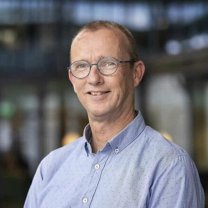More precise radiation improves cancer treatment
As a clinical physicist, Coen Hurkmans provides innovation in cancer treatment. "Because of technological developments, we can now irradiate more effectively and the treatment is less invasive."
The technology that makes radiation therapy for cancer possible has improved considerably in recent decades, clinical physicist Coen Hurkmans observes. He has been working at the Catharina Hospital in Eindhoven for 23 years. “We can irradiate more and more precisely. That has many advantages, fewer treatments are needed and it is less invasive for patients,” he states. On June 7, 2024, Hurkmans will hold his inaugural address during the MedTech Day at Eindhoven University of Technology. Last year – in addition to his work at the hospital – he was already appointed professor of radiotherapy. Hurkmans’ department supervises several graduating master’s students and doctoral students. “The cross-pollination between the hospital and the university ensures that innovations get into practice faster. That is incredibly important in healthcare,” he says.
Hurkmans himself studied physics. During his graduate internship at the radiotherapy department of Lund University Hospital in Sweden, he was supervised by two clinical physicists. “When I returned to the Netherlands, I knew I wanted to do this too,” he says. After completing his master’s, he took another four-year course at a hospital – the Dutch Cancer Institute in Amsterdam – before joining Catharina Hospital as a clinical physicist.
Bringing innovations to practice
As a clinical physicist, Hurkmans deals daily with the technical aspects of innovation in healthcare. What equipment is needed? What is on the market? What works and what doesn’t? He is involved in the approval, purchase, and installation of innovations. This is followed by a comprehensive inspection to make sure everything is working properly.
Radiating more precisely
More precise irradiation, he says, is the biggest and most impactful development in recent years. “When I was doing my training, we used to irradiate patients sometimes daily for as long as seven to eight weeks. That’s very stressful. If we want to irradiate less often, we have to give more radiation at a time. Previously, that was not an option because surrounding, healthy tissue was also affected during treatment. That caused more side effects.”
For more precise radiation, two components with associated technologies are important. “First, the radiation machine itself must be able to work more precisely. That way we only treat the tumor and hit less healthy tissue. In addition, it is important to be able to clearly see where we are irradiating during treatment. Now the image quality on a standard treatment machine is comparable to a poor CT scan. MRI images can now also be made on a new treatment device. With this, soft tissues can be seen much better. We are working with the supplier of both devices to see how we can improve image quality even further,” Hurkmans explains.
He explains that the current standard devices only image the patient’s body before and after treatment. The new devices image the patient’s body during radiation treatment. About 130 of the new devices are now in use worldwide, compared to about 12,000 standard treatment devices. “With the new devices, we can also make adjustments during treatment,” says Hurkmans, “and we can reduce the number of treatments for patients. This allows the number of treatments for patients with prostate cancer, for example, to go down from 20 to five, according to Hurkmans. “That’s a lot more pleasant for the patient.”
....
Read the full article on the website of TU Eindhoven.
